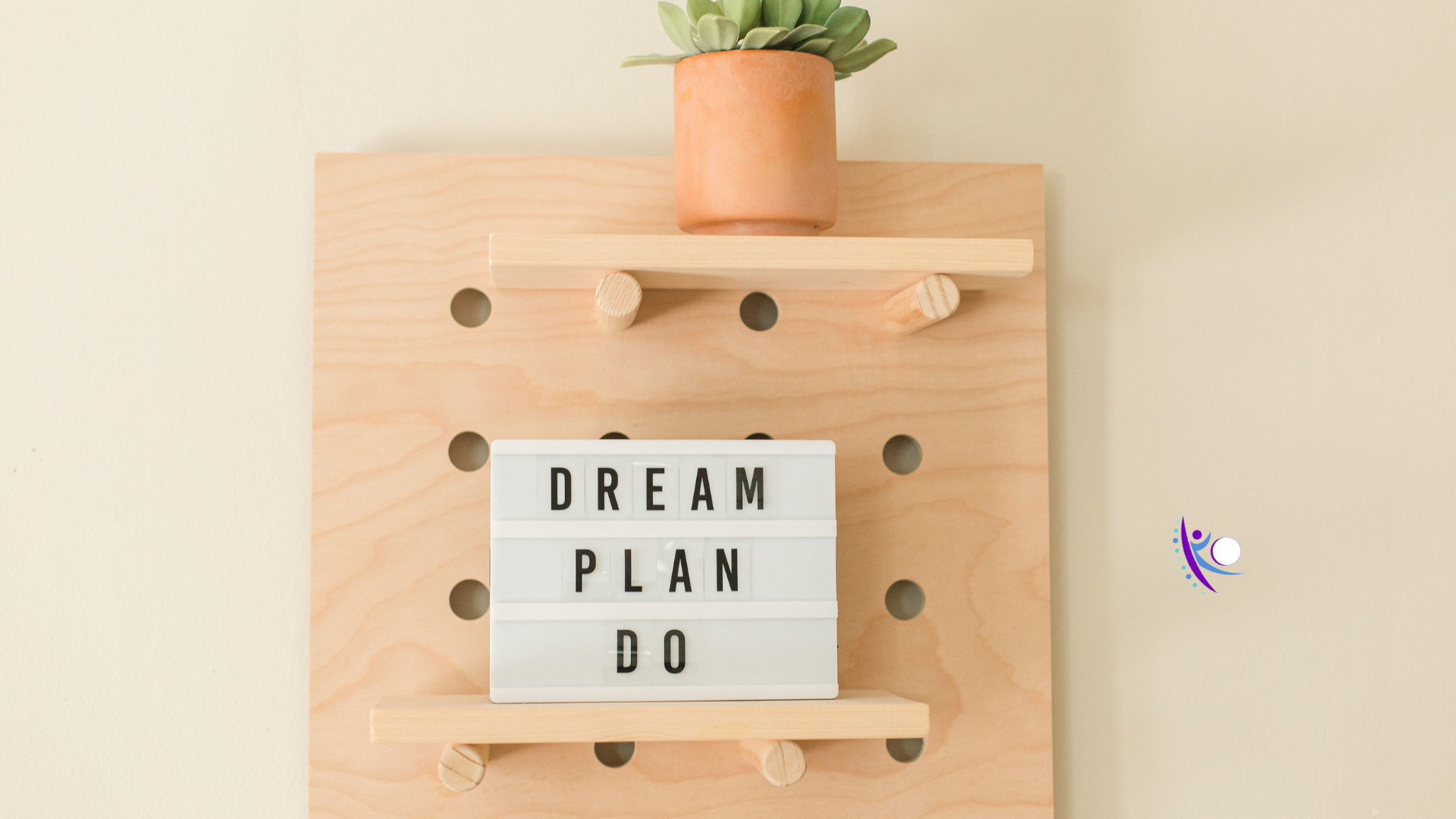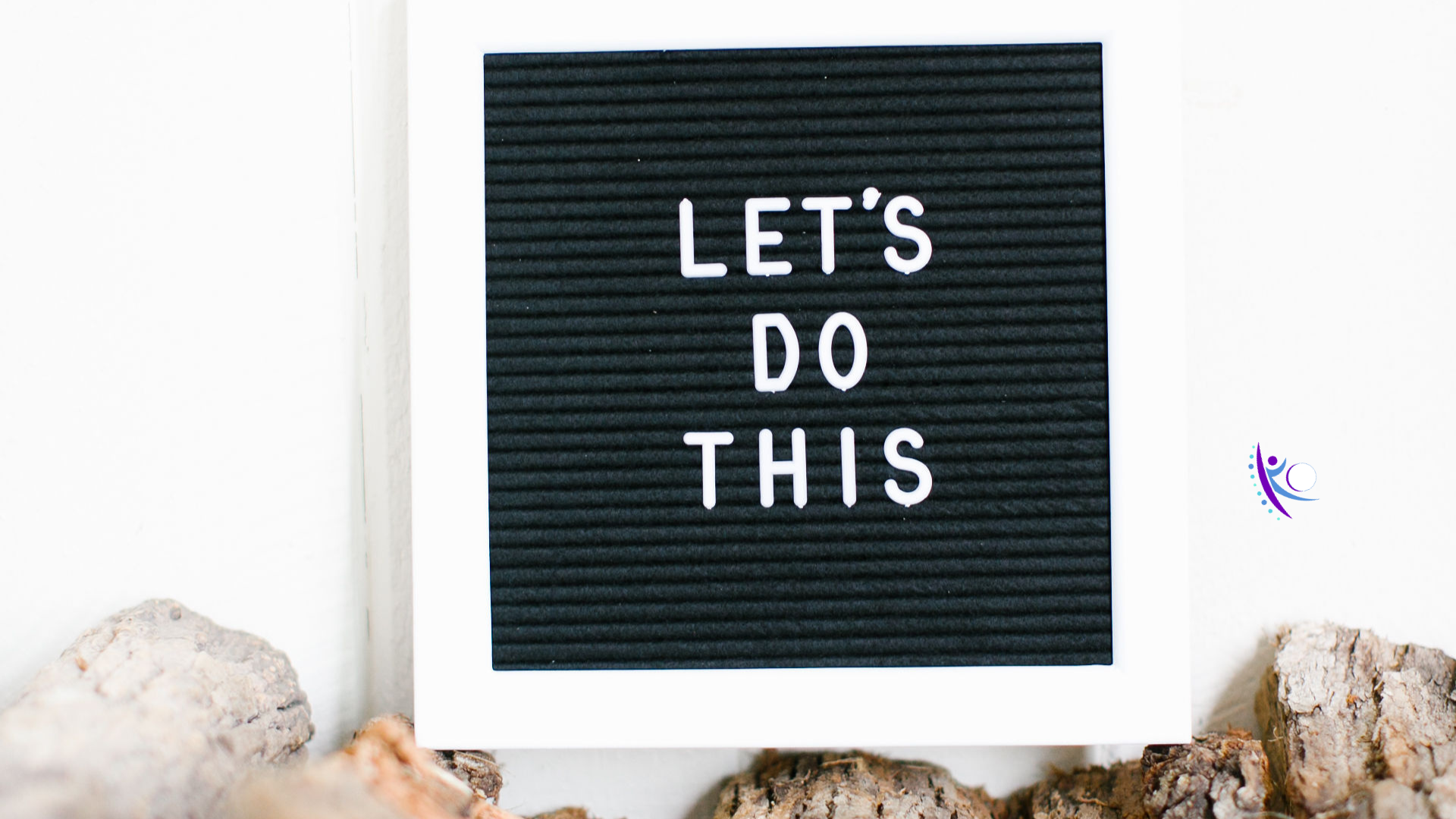Finding Motivation to Exercise in Your 50s: Overcoming the Struggle
Introduction
Welcome to our comprehensive guide on finding motivation to exercise in your 50s and beyond. As a certified senior life coach and fitness trainer with over 20 years of experience, I understand the challenges individuals face when it comes to maintaining a regular exercise routine. In this article, we will explore effective strategies to overcome the struggle with motivation and help you embrace a healthier, more active lifestyle focused on health and wellness.
Exercise plays a vital role in maintaining overall health, vitality, and longevity, especially as we age. Regular physical activity offers a multitude of benefits, including:
Improved cardiovascular health: Engaging in exercise helps strengthen the heart and improves circulation, reducing the risk of heart disease, high blood pressure, and stroke.
Enhanced muscle strength and bone health: Regular resistance training and weight-bearing exercises not only increase muscle mass and strength but also promote bone density, reducing the risk of osteoporosis and fractures.
Weight management and metabolic health: Exercise helps to burn calories, control weight, and improve metabolic function. It also contributes to better blood sugar control, reducing the risk of type 2 diabetes.
Boosted mental well-being: Physical activity releases endorphins, the feel-good hormones, which can elevate mood, reduce stress, anxiety, and depression, and enhance cognitive function.
Increased energy levels: Contrary to popular belief, exercise actually boosts energy levels and combats fatigue, leaving you feeling more energized and productive throughout the day.
Now, you might be thinking, "But I'm in my 50s, is it too late to start?" Absolutely not! It's never too late to embark on a fitness journey and reap the numerous benefits of an active lifestyle. In fact, research shows that individuals who start exercising later in life can still experience significant improvements in strength, flexibility, cardiovascular fitness, and overall well-being.
Whether you're a beginner or someone who used to be active but has lost motivation along the way, there are tailored solutions to help you overcome the common struggle with exercise motivation in your 50s. By implementing the strategies and tips provided in this article, you'll discover that you have the power to reclaim your motivation, transform your fitness routine, and achieve remarkable results.
So, let's dive in and explore practical ways to overcome the challenges, reignite your motivation, and embrace a healthier, more active lifestyle in your 50s and beyond. Remember, it's never too late to start this incredible journey toward improved health, vitality, and longevity.
Ready to take control of your fitness journey and stay motivated? Sign up for our exclusive email list and receive valuable tips, strategies, and inspiration delivered right to your inbox!
Understanding the Challenges of Motivation in Your 50s
When it comes to fitness for individuals over 50, struggling with motivation is a common issue. Busy schedules, physical changes, lack of confidence, and pervasive myths about aging and exercise can contribute to the lack of motivation experienced by many.
Busy schedules and competing priorities: Balancing work, family, and other responsibilities can make it challenging to prioritize exercise. The demands of daily life can leave little time and energy for physical activity, leading to a lack of motivation.
Solution: Time management is key. Schedule exercise sessions like you would any other important appointment. Treat it as a non-negotiable commitment to your health and well-being. Find pockets of time throughout the day to incorporate movement, such as taking short walks during breaks or engaging in active hobbies.
Physical changes and age-related limitations: As we age, our bodies undergo various changes, including a decline in muscle mass, flexibility, and endurance. Age-related limitations, such as joint stiffness or chronic conditions, can dampen motivation and make exercise seem more challenging.
Solution: Seek guidance from professionals who specialize in fitness for older adults, such as certified trainers or physical therapists. They can help tailor exercise programs to your specific needs, ensuring safety and effectiveness. Embrace low-impact activities, such as swimming, walking, or yoga, which are gentle on the joints while providing numerous health benefits.
Lack of confidence or self-image concerns: Some individuals in their 50s may struggle with self-doubt or have concerns about their physical appearance, which can affect their motivation to exercise.
Solution: Shift your focus from aesthetics to overall well-being. Remember that exercise is about taking care of your body, improving health markers, and enhancing vitality. Set realistic and achievable goals that are not solely based on appearance but also on functional abilities and strength gains. Celebrate your progress and focus on the positive changes happening within you.
Pervasive myths and misconceptions about aging and exercise: There are numerous myths surrounding aging and exercise that can negatively impact motivation. One common misconception is the fear of exceeding heart rate training zones and pushing oneself too hard.
Solution: Educate yourself about exercise and aging from reliable sources. Consult with fitness professionals who can guide you on heart rate training zones and help you understand how to exercise safely within your limits. By debunking these myths, you'll gain confidence and motivation to engage in effective workouts tailored to your fitness level.
By recognizing and addressing these challenges, you can overcome the barriers to fitness motivation in your 50s. Remember, every journey is unique, and with the right strategies and mindset, you can conquer these obstacles and achieve remarkable results. Stay tuned as we delve deeper into solutions that will help reignite your motivation and make exercise an enjoyable and integral part of your lifestyle.
Don't miss out on expert guidance and personalized support for your fitness goals. Sign up for our email list and become part of our thriving community of individuals dedicated to health and wellness.
Setting Realistic Goals and Creating a Personalized Exercise Plan
To overcome the lack of motivation, it's important to set realistic and attainable goals based on personal interests and abilities. Consulting with a certified senior life coach or fitness trainer is highly recommended before starting any exercise program. Here are valuable tips for creating a personalized exercise plan: selecting enjoyable activities, incorporating variety, finding suitable exercises for different fitness levels, and including strength training, cardiovascular exercises, and flexibility exercises.
Here are some tips to help you create a personalized exercise plan that keeps you motivated and excited:
Choose activities that are enjoyable and suit your preferences: Find physical activities that you genuinely enjoy and look forward to. It could be swimming, dancing, cycling, hiking, or even trying out new fitness classes. When you enjoy the activity, it's easier to stay motivated and consistent.
Incorporate variety to keep things interesting: Don't get stuck in a monotonous routine. Mix things up by incorporating different types of exercises and activities. This not only keeps you engaged but also challenges different muscle groups and promotes overall fitness. Alternate between strength training, cardiovascular exercises, and flexibility exercises to create a well-rounded routine.
Find suitable exercise options for different fitness levels and physical abilities: Recognize that everyone's fitness level and physical abilities are different. Be mindful of your current capabilities and gradually progress from there. If you're a beginner, start with low-impact exercises and gradually increase the intensity and duration over time. If you have specific physical limitations, work with a fitness professional who can help modify exercises to suit your needs.
Incorporate strength training, cardiovascular exercises, and flexibility exercises: A well-rounded exercise routine includes all three components. Strength training helps build and maintain muscle mass, which is important for functional abilities and metabolism. Cardiovascular exercises, such as brisk walking or cycling, improve cardiovascular health and boost endurance. Flexibility exercises, like stretching or yoga, enhance mobility and reduce the risk of injuries.
Remember, your exercise plan should be tailored to your unique circumstances and goals. Start by setting specific, measurable, attainable, relevant, and time-bound (SMART) goals that reflect what you want to achieve. Break down your goals into smaller milestones to track your progress and celebrate achievements along the way. Adapt your plan as needed to accommodate any changes in your lifestyle or preferences.
By creating a personalized exercise plan that aligns with your interests and abilities, you'll find greater enjoyment, motivation, and long-term success on your fitness journey. Stay tuned as we explore strategies to overcome mental barriers and keep your motivation soaring high.
Want to stay motivated, overcome obstacles, and achieve your fitness goals? Our email list is packed with actionable insights, motivational stories, and special offers.
Overcoming Mental Barriers and Staying Motivated
Mental barriers can hinder motivation, but they can be overcome with the right strategies. Addressing self-doubt and negative self-talk is crucial in fostering a positive mindset. Finding social support and accountability through exercise partners or joining groups can provide the motivation and encouragement needed. Setting small milestones and celebrating achievements along the way helps to sustain motivation. Additionally, incorporating mindfulness and positive visualization techniques can keep you focused and motivated. Utilizing technology and fitness apps to track progress and stay motivated can be highly effective as well.
Overcoming self-doubt and negative self-talk: Negative thoughts and self-doubt can sabotage your motivation. Recognize and challenge these self-limiting beliefs. Replace negative self-talk with positive affirmations. Focus on your strengths and past successes, reminding yourself that you are capable of achieving your goals.
Finding social support and accountability: Surround yourself with like-minded individuals who share similar fitness goals. Seek out exercise partners, join fitness classes, or become part of a supportive community. When you have others to lean on, share experiences, and hold you accountable, it becomes easier to stay motivated and committed.
Setting small milestones and celebrating achievements: Break your larger goals into smaller, manageable milestones. Celebrate each milestone along the way, as they represent progress and success. This reinforces positive reinforcement and helps you stay motivated throughout your journey.
Incorporating mindfulness and positive visualization techniques: Practice mindfulness during your workouts by focusing on the present moment, paying attention to your body's sensations, and embracing the joy of movement. Additionally, use positive visualization techniques to imagine yourself achieving your goals. Visualize the feeling of accomplishment and the benefits that come with regular exercise.
Using technology and fitness apps: Leverage the power of technology to stay motivated and track your progress. Fitness apps can help you set goals, monitor your workouts, and provide valuable insights. They can also offer challenges, reminders, and virtual rewards to keep you engaged and motivated.
By addressing these mental barriers and implementing these strategies, you can strengthen your motivation and overcome any obstacles that come your way. Remember, motivation may ebb and flow, but with the right mindset and support, you can maintain a consistent exercise routine and achieve your fitness goals. Stay tuned as we delve deeper into practical tips for incorporating exercise into your busy lifestyle.
Elevate your fitness journey with the power of knowledge and inspiration. Join our email list to receive exclusive content, expert advice, and exciting updates.
Practical Tips for Incorporating Exercise into Your Lifestyle
We understand that a busy lifestyle can make it challenging to find time for exercise. However, with some strategic planning and creativity, you can seamlessly incorporate physical activity into your daily routine. Here are some practical tips to help you make exercise a priority, even amidst a hectic schedule:
Time management techniques and scheduling workouts: Treat exercise as an important appointment by scheduling it in your calendar. Set aside dedicated time slots for physical activity and commit to them. Consider it non-negotiable self-care time. Remember, you deserve to prioritize your health and well-being.
Incorporating physical activity into daily routines: Look for opportunities to be active throughout the day. Take the stairs instead of the elevator, walk or bike to nearby destinations whenever possible, and park your car farther away from your destination to get in some extra steps. Transform mundane activities into active ones, such as doing squats or lunges while brushing your teeth or performing calf raises while waiting in line.
Utilizing breaks and lunch hours for short bursts of activity: Make the most of your breaks and lunch hours by engaging in short bursts of physical activity. Take a brisk walk around the block, do a quick bodyweight workout, or practice stretching exercises. These short activity breaks not only contribute to your daily exercise but also help refresh your mind and boost productivity.
Exploring convenient exercise options like home workouts or online fitness classes: If finding time to go to the gym is a challenge, consider incorporating home workouts or online fitness classes into your routine. There are numerous resources available, including workout videos, fitness apps, and live-streamed classes that can be done in the comfort of your own home. These options provide flexibility and convenience, allowing you to exercise at a time that suits you best.
Remember, even small bouts of physical activity throughout the day can add up and contribute to your overall fitness. Be creative, find what works best for your schedule, and prioritize movement in whatever way you can. Stay tuned as we explore ways to overcome age-related limitations and adapt your exercise routine as you age.
Sign up for our email list and gain access to valuable resources, personalized tips, and the support of a community that understands your struggles and celebrates your victories. Join now and let's make your fitness dreams a reality!
Adjusting and Adapting as You Age
As we age, it's important to acknowledge that our physical abilities may change. However, this doesn't mean we should give up on exercise. On the contrary, it highlights the need to adapt our exercise routines to ensure safety, prevent injury, and maintain overall well-being. Here are some key considerations when adjusting and adapting your exercise routine as you age:
Acknowledge changes and adapt exercise routines accordingly: Recognize that your body may have different needs and limitations compared to when you were younger. Adjust the intensity, duration, and type of exercise to suit your current fitness level. Listen to your body, and don't hesitate to modify or switch exercises as needed.
Emphasize flexibility exercises and balance training: Flexibility exercises help maintain joint mobility and range of motion, which can decline with age. Incorporate stretches and yoga poses to enhance flexibility and prevent stiffness. Additionally, focus on balance training exercises to improve stability and reduce the risk of falls, which can be more prevalent as we age.
Modifications to reduce the risk of injury: Consider modifications to exercises to accommodate any existing conditions or physical limitations. For example, using lower weights or resistance bands, performing exercises with proper form and alignment, and avoiding movements that cause discomfort or pain. Working with a certified fitness professional experienced in working with older adults can provide valuable guidance and ensure exercises are tailored to your needs.
Stay in touch with healthcare providers: It's crucial to maintain open communication with your healthcare providers, such as your doctor, physical therapist, or other specialists. They can provide guidance, evaluate your exercise routine, and make recommendations specific to your health condition or any recent changes. Regular check-ups and consultations will help ensure your exercise routine remains safe and effective.
By adjusting and adapting your exercise routine as you age, you can continue to enjoy the benefits of physical activity while minimizing the risk of injuries or setbacks. Remember, your health and safety should always be a priority. Stay tuned as we provide additional guidance and support to help you on your fitness journey.
Ready to take control of your fitness journey and stay motivated? Sign up for our exclusive email list and receive valuable tips, strategies, and inspiration delivered right to your inbox!
Conclusion
Congratulations! You've reached the end of our comprehensive guide on finding motivation to exercise in your 50s and beyond. Let's recap the main points we discussed and leave you with some final thoughts:
Throughout this article, we explored the common challenges faced when it comes to maintaining motivation for exercise in your 50s. We discussed busy schedules, physical changes, self-doubt, and age-related misconceptions. However, we also provided practical solutions and strategies to help you overcome these obstacles.
Remember, finding motivation to exercise in your 50s is not only possible but also worth the effort. Regular physical activity plays a crucial role in maintaining health, vitality, and longevity. By incorporating exercise into your lifestyle, you can experience improved cardiovascular health, increased muscle strength, enhanced mental well-being, and increased energy levels.
Take the first step towards a healthier, more active lifestyle today. Embrace the journey and the transformative power of exercise. Set realistic goals, create a personalized exercise plan, and address any mental barriers that may arise along the way. Stay committed, celebrate milestones, and find joy in the process.
Don't forget to stay in touch with your healthcare providers, who can provide guidance and modifications specific to your needs. They are invaluable resources as you navigate your fitness journey.
By investing in your health and well-being now, you're setting yourself up for long-term benefits. Embrace the opportunity to live your best life in your 50s and beyond. You have the power to make a positive change and unlock your full potential.
Thank you for joining us on this transformative journey. Remember, we're here to support you every step of the way. Now, take a deep breath, put on your sneakers, and let's embark on this incredible adventure toward a healthier, more vibrant you!







